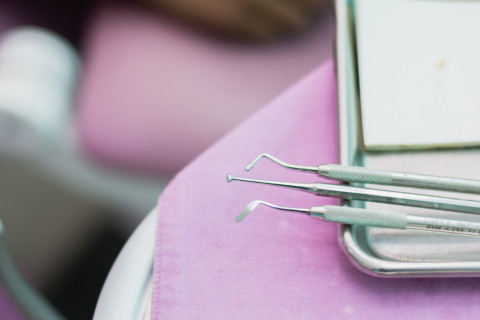Rupture of an intracranial aneurysm is the most common cause of a subarachnoid haemorrhage, which is a devastating cerebro-vascular event affecting typically working-age people. The prevalence of unruptured intracranial aneurysms remains unknown, but at least one in 20 to 30 adults is likely to carry an asymptomatic aneurysm, out of which approximately 25% will rupture in a lifetime. About 50% of the SAH patients die during the first year from bleeding. Intracranial aneurysm disease is associated with inflammation. Periodontal infection and bacteria are shown to associate with cardiovascular diseases but no studies, in which bacteria have been detected in the saccular intracranial aneurysm tissue, have been conducted.
In the doctoral thesis study by Mikko Pyysalo, Licentiate of Dentistry, a cohort of 70 patients with ruptured or unruptured intracranial aneurysms was collected. Specimens from aneurysm sac tissue were obtained perioperatively after prompt microsurgical clipping of the saccular aneurysm under sterile conditions between June 2010 and June 2014. A cohort of 90 patients undergoing preoperative dental examination due to planned surgical treatment of an intracranial aneurysm were recruited to the study between September 2012 and December 2014. The patients’ teeth were investigated during the acute hospitalization period of aneurysm treatment. Both panoramic tomography and dental cone beam tomography were performed for all the patients. Samples for bacterial DNA analyses were taken from the deepest gingival pocket crevicular fluid of the subpopulation of 60 patients with an unruptured aneurysm using a sterile blotting paper pin. Patients were asked to report their tooth cleaning habits, i.e. how many times a day they cleaned their teeth, and smoking habits. Aneurysm tissue samples were analysed using quantitative polymerase chain reaction (qPCR). Gingival pocket samples were analysed using qPCR and 16S rRNA gene-based metagenomics.
Oral and pharyngeal bacterial DNA was detected in 70% of ruptured and unruptured intracranial aneurysm tissue samples along with possibly bacterial driven inflammation. The patients with saccular intracranial aneurysms had significantly more dental infectious foci (≥6 mm gingival pockets) than are found in the normal population in general. Fusobacterium nucleatum, which appears to be associated with the progression of periodontitis, was frequently found in the gingival pocket samples from patients with intracranial aneurysms. Active tooth brushing appears to reduce the alpha diversity and the amount of Fusobacterium nucleatumin the gingival pocket microbiome. It appears that oral bacteria might also play a role in the pathogenesis of intracranial aneurysm disease.
Together with previous studies, this study demonstrates the need to investigate further the role of microbiota in the complex pathobiology of intracranial aneurysms.
The doctoral dissertation of Mikko Pyysalo, Licentiate of Dentistry, entitled Oral bacterial findings in patients with intracranial aneurysms will be examined at the Faculty of Health Sciences on 27 September 2019. The Opponent in the public examination will be Professor Eija Könönen of the University of Turku, and the Custos will be Docent Tanja Pessi of the University of Tampere.
Photo available for download at
https://kuvapankki.uef.fi/A/UEF+kuvahakemisto/17720?encoding=UTF-8
